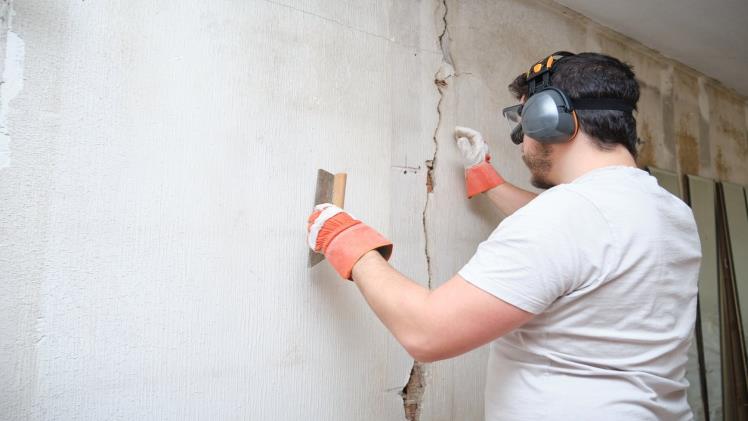You are pulling out of the garage looking forward to going to wine tastings. You look down and notice some problems with your concrete. Concrete is a sturdy and versatile material widely used in construction, but despite its durability, it is susceptible to various issues that can affect its integrity over time. Understanding the causes behind concrete cracks and other problems around your home can help in prevention and timely maintenance.
Causes of Concrete Cracks and Problems:
1. Shrinkage:
One of the primary reasons for cracks in concrete is shrinkage. As concrete dries and cures, it undergoes a natural process of contraction, resulting in cracks. This is particularly common in newly poured concrete or during extreme temperature fluctuations.
2. Settlement:
Uneven settling of the ground beneath concrete surfaces can lead to cracks. Factors such as soil erosion, poor compaction during construction, or underground water movement can cause the ground to shift, impacting the stability of the concrete.
3. Freeze-Thaw Cycles:
In colder climates, the expansion and contraction of water within concrete pores during freeze-thaw cycles can create pressure, leading to cracks and surface spalling. This process gradually weakens the concrete structure.
4. Poor Installation or Workmanship:
Improper mixing of concrete, inadequate reinforcement, or improper finishing techniques during installation can result in weak spots and cracks. These flaws might not manifest immediately but can lead to problems over time.
5. Chemical Exposure:
Exposure to chemicals such as de-icing agents, road salts, or harsh cleaning solutions can corrode the concrete surface, causing deterioration and cracks.
6. Overloading and Stress:
Excessive weight, heavy traffic, or structural overload can strain concrete beyond its capacity, leading to cracks or even structural failure.
Common Problems Associated with Concrete:
1. Cracking:
Cracks can occur in various forms—hairline, surface, or deep fissures—depending on the underlying cause. These cracks not only compromise the aesthetics but also weaken the structure over time.
2. Spalling:
Spalling refers to the flaking or chipping of the concrete surface, often caused by freeze-thaw cycles, moisture intrusion, or chemical exposure. It can result in rough and deteriorated patches.
3. Scaling:
Scaling is similar to spalling but occurs when the top layer of the concrete surface peels away, leaving a rough and pitted appearance. This is often due to inadequate curing or finishing during installation.
4. Discoloration:
Changes in the color of concrete can occur due to various factors, including improper curing, exposure to UV rays, or reactions with chemicals or contaminants.
5. Crumbling and Erosion:
Continuous exposure to harsh weather conditions or chemicals can cause the concrete to erode or crumble, leading to structural weakness and deterioration.
Preventive Measures and Maintenance:
1. Proper Installation and Reinforcement:
Ensure proper mixing, adequate reinforcement, and professional installation to minimize potential issues.
2. Sealing and Waterproofing:
Apply sealants to protect concrete surfaces from moisture penetration and chemical damage.
3. Regular Inspection and Maintenance:
Conduct routine inspections to identify early signs of damage and address them promptly. Repair small cracks or damages before they escalate.
4. Proper Drainage:
Ensure proper drainage systems to redirect water away from concrete surfaces, reducing the risk of erosion and freeze-thaw damage.
5. Avoiding Chemical Exposure:
Minimize exposure to harsh chemicals and use appropriate cleaning agents to preserve the concrete surface.
6. Professional Assistance:
Seeking advice from concrete specialists or contractors can provide valuable insights into the specific needs of your concrete surfaces. Professional evaluation and maintenance schedules can help prevent potential issues from escalating.
7. Climate and Environmental Factors:
Understanding the local climate and environmental conditions is crucial. Areas with high humidity, frequent rainfall, or extreme temperature variations may experience different concrete-related challenges, requiring tailored preventive measures.
By considering these additional factors and seeking expert guidance, homeowners can effectively protect their concrete surfaces, ensuring their durability and longevity against various environmental and structural challenges.
Understanding the potential causes and common problems associated with concrete around your home empowers you to take proactive measures to mitigate these issues. With proper installation, regular maintenance, and timely repairs, you can ensure the longevity and structural integrity of your concrete surfaces, preserving their functionality and aesthetic appeal for years to come.

